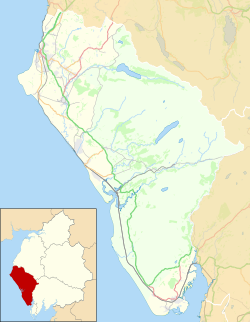| Sandwith | |
|---|---|
| Village | |
 | |
Location within Cumbria | |
| OS grid reference | NX965149 |
| Civil parish | |
| Unitary authority | |
| Ceremonial county | |
| Region | |
| Country | England |
| Sovereign state | United Kingdom |
Sandwith is a settlement and former civil parish in Cumbria, England, about 7 miles from Workington and near St Bees. It lies in the parish of Whitehaven, in Cumberland unitary authority area. Sandwith was also a ward; in 2011 the ward had a population of 2463. [1] In 1931, the parish had a population of 332. [2]

